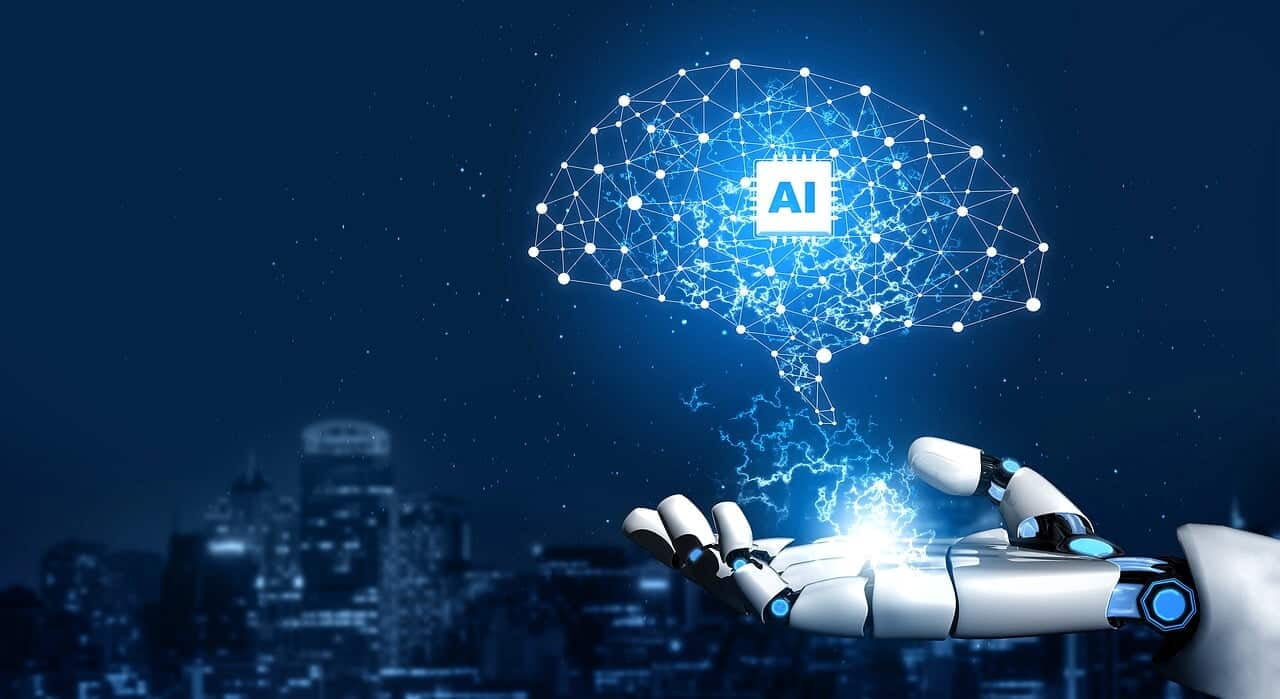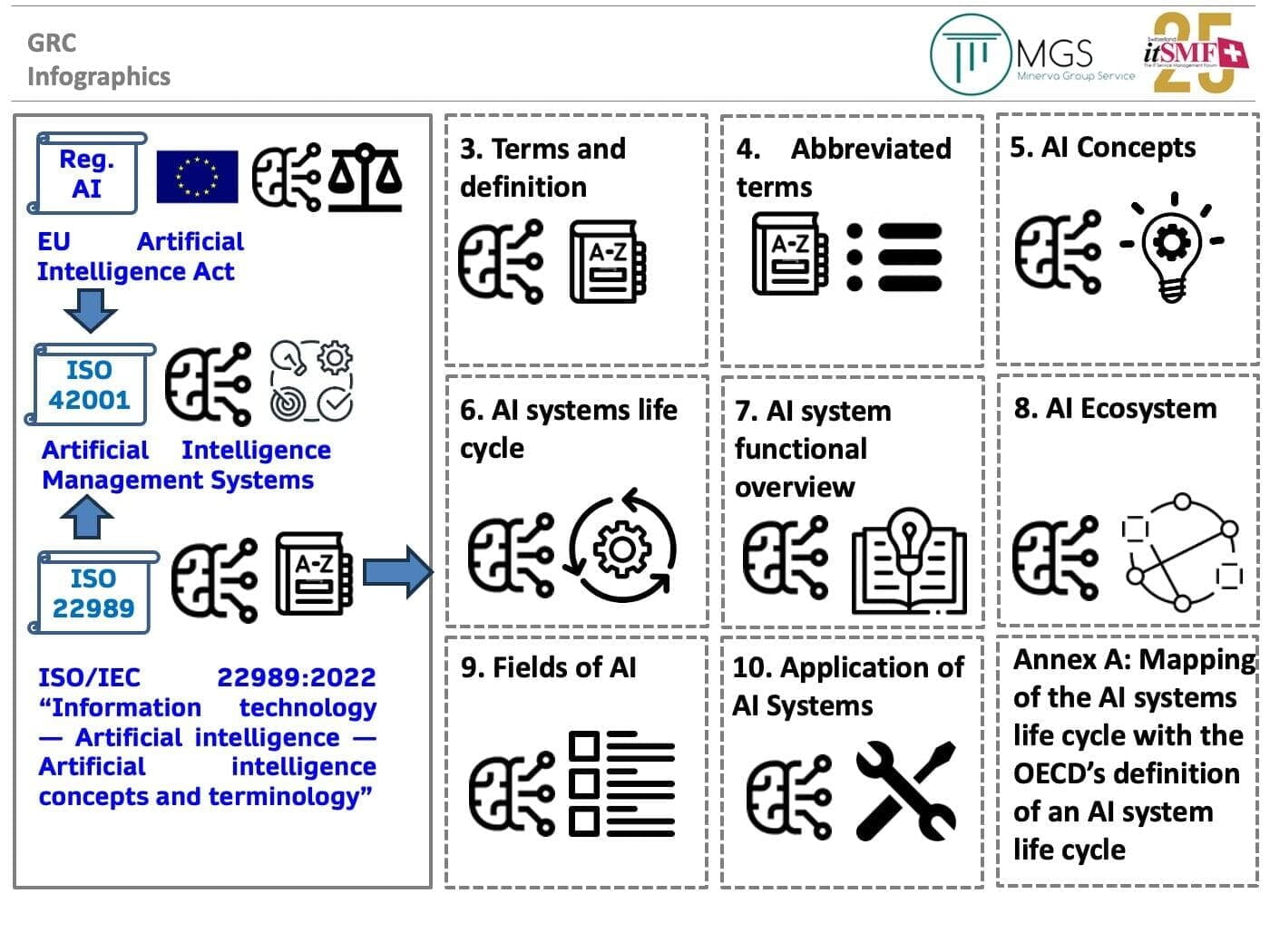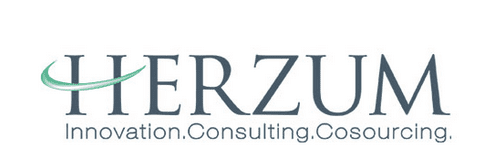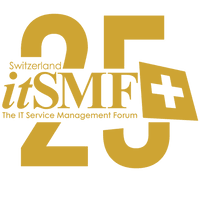📕 3.1.1 AI agent: automated (3.1.7) entity that senses and responds to its environment and takes actions to achieve its goals.
📕 3.1.2 AI component: functional element that constructs an AI system (3.1.4).
📕 3.1.3 artificial intelligence, AI: <discipline> research and development of mechanisms and applications of AI systems (3.1.4).
Note 1 to entry: Research and development can take place across any number of fields such as computer science, data science, humanities, mathematics and natural sciences.
📕 3.1.4 artificial intelligence system, AI system: engineered system that generates outputs such as content, forecasts, recommendations or decisions for a given set of human-defined objectives.
Note 1 to entry: The engineered system can use various techniques and approaches related to artificial intelligence (3.1.3) to develop a model (3.1.23) to represent data, knowledge (3.1.21), processes, etc. which can be used to conduct tasks (3.1.35).
Note 2 to entry: AI systems are designed to operate with varying levels of automation (3.1.7).
📕 3.1.5 autonomy, autonomous: characteristic of a system that is capable of modifying its intended domain of use or goal without external intervention, control or oversight.
📕 3.1.6 application specific integrated circuit, ASIC: integrated circuit customized for a particular use.
[SOURCE:ISO/IEC/IEEE 24765:2017, 3.193, modified — Acronym has been moved to separate line.]
📕 3.1.7 automatic, automation, automated: pertaining to a process or system that, under specified conditions, functions without human intervention.
[SOURCE:ISO/IEC 2382:2015, 2121282, modified — In the definition, “a process or equipment” has been replaced by “a process or system” and preferred terms of “automated and automation” are added.]
📕 3.1.8 cognitive computing: category of AI systems (3.1.4) that enables people and machines to interact more naturally.
Note 1 to entry: Cognitive computing tasks are associated with machine learning (3.3.5), speech processing, natural language processing (3.6.9), computer vision (3.7.1) and human-machine interfaces.
📕 3.1.9 continuous learning, continual learning, lifelong learning: incremental training of an AI system (3.1.4) that takes place on an ongoing basis during the operation phase of the AI system life cycle.
📕 3.1.10 connectionism, connectionist paradigm, connectionist model, connectionist approach: form of cognitive modelling that uses a network of interconnected units that generally are simple computational units.
📕3.1.11 data mining: computational process that extracts patterns by analysing quantitative data from different perspectives and dimensions, categorizing them, and summarizing potential relationships and impacts.
[SOURCE:ISO 16439:2014, 3.13, modified — replace “categorizing it” with “categorizing them” because data is plural.]
📕 3.1.12 declarative knowledge: knowledge represented by facts, rules and theorems
Note 1 to entry: Usually, declarative knowledge cannot be processed without first being translated into procedural knowledge (3.1.28).
[SOURCE:ISO/IEC 2382-28:1995, 28.02.22, modified — Remove comma after “rules” in the definition.]
📕 3.1.13 expert system: AI system (3.1.4) that accumulates, combines and encapsulates knowledge (3.1.21) provided by a human expert or experts in a specific domain to infer solutions to problems.
📕 3.1.14 general AI, AGI, artificial general intelligence: type of AI system (3.1.4) that addresses a broad range of tasks (3.1.35) with a satisfactory level of performance.
Note 1 to entry: Compared to narrow AI (3.1.24).
Note 2 to entry: AGI is often used in a stronger sense, meaning systems that not only can perform a wide variety of tasks, but all tasks that a human can perform.
📕 3.1.15 genetic algorithm, GA: algorithm which simulates natural selection by creating and evolving a population of individuals (solutions) for optimization problems.
📕 3.1.16 heteronomy, heteronomous: characteristic of a system operating under the constraint of external intervention, control or oversight.
📕 3.1.17 inference: reasoning by which conclusions are derived from known premises.
Note 1 to entry: In AI, a premise is either a fact, a rule, a model, a feature or raw data.
Note 2 to entry: The term "inference" refers both to the process and its result.
[SOURCE:ISO/IEC 2382:2015, 2123830, modified – Model, feature and raw data have been added. Remove “Note 4 to entry: 28.03.01 (2382)”. Remove “Note 3 to entry: inference: term and definition standardized by ISO/IEC 2382-28:1995”.]
📕 3.1.18 internet of things, IoT: infrastructure of interconnected entities, people, systems and information resources together with services that process and react to information from the physical world and virtual world.
[SOURCE:ISO/IEC 20924:2021, 3.2.4, modified – “…services which processes and reacts to…” has been replaced with “…services that process and react to…” and acronym has been moved to separate line.]
📕 3.1.19 IoT device: entity of an IoT system (3.1.20) that interacts and communicates with the physical world through sensing or actuating.
Note 1 to entry: An IoT device can be a sensor or an actuator.
[SOURCE:ISO/IEC 20924:2021, 3.2.6]
📕 3.1.20 IoT system: system providing functionalities of IoT (3.1.18).
Note 1 to entry: An IoT system can include, but not be limited to, IoT devices, IoT gateways, sensors and actuators.
[SOURCE:ISO/IEC 20924:2021, 3.2.9]
📕 3.1.21knowledge: <artificial intelligence> abstracted information about objects, events, concepts or rules, their relationships and properties, organized for goal-oriented systematic use.
Note 1 to entry: Knowledge in the AI domain does not imply a cognitive capability, contrary to usage of the term in some other domains. In particular, knowledge does not imply the cognitive act of understanding.
Note 2 to entry: Information can exist in numeric or symbolic form.
Note 3 to entry: Information is data that has been contextualized, so that it is interpretable. Data is created through abstraction or measurement from the world.
📕 3.1.22 life cycle: evolution of a system, product, service, project or other human-made entity, from conception through retirement.
[SOURCE:ISO/IEC/IEEE 15288:2015, 4.1.23]
📕 3.1.23 model: physical, mathematical or otherwise logical representation of a system, entity, phenomenon, process or data.
[SOURCE:ISO/IEC 18023-1:2006, 3.1.11, modified – Remove comma after “mathematical” in the definition. "or data" is added at the end.]
📕 3.1.24 narrow AI: type of AI system (3.1.4) that is focused on defined tasks (3.1.35) to address a specific problem.
Note 1 to entry: Compared to general AI (3.1.14).
📕 3.1.25 performance: measurable result.
Note 1 to entry: Performance can relate either to quantitative or qualitative findings.
Note 2 to entry: Performance can relate to managing activities, processes, products (including services), systems or organizations.
📕3.1.26 planning: <artificial intelligence> computational processes that compose a workflow out of a set of actions, aiming at reaching a specified goal.
Note 1 to entry: The meaning of the “planning” used in AI life cycle or AI management standards can be also actions taken by human beings.
📕 3.1.27 prediction: primary output of an AI system (3.1.4) when provided with input data (3.2.9) or information.
Note 1 to entry: Predictions can be followed by additional outputs, such as recommendations, decisions and actions.
Note 2 to entry: Prediction does not necessarily refer to predicting something in the future.
Note 3 to entry: Predictions can refer to various kinds of data analysis or production applied to new data or historical data (including translating text, creating synthetic images or diagnosing a previous power failure).
📕 3.1.28 procedural knowledge: knowledge which explicitly indicates the steps to be taken in order to solve a problem or to reach a goal.
[SOURCE:ISO/IEC 2382-28:1995, 28.02.23]
📕 3.1.29 robot: automation system with actuators that performs intended tasks (3.1.35) in the physical world, by means of sensing its environment and a software control system.
Note 1 to entry: A robot includes the control system and interface of a control system.
Note 2 to entry: The classification of a robot as industrial robot or service robot is done according to its intended application.
Note 3 to entry: In order to properly perform its tasks (3.1.35), a robot makes use of different kinds of sensors to confirm its current state and perceive the elements composing the environment in which it operates.
📕 3.1.30 robotics: science and practice of designing, manufacturing and applying robots.
[SOURCE:ISO 8373:2012, 2.16]
📕 3.1.31 semantic computing: field of computing that aims to identify the meanings of computational content and user intentions and to express them in a machine-processable form.
📕 3.1.32 soft computing: field of computing that is tolerant of and exploits imprecision, uncertainty and partial truth to make problem-solving more tractable and robust
Note 1 to entry: Soft computing encompasses various techniques such as fuzzy logic, machine learning and probabilistic reasoning.
📕 3.1.33 symbolic AI: AI (3.1.3) based on techniques and models (3.1.23) that manipulate symbols and structures according to explicitly defined rules to obtain inferences
Note 1 to entry: Compared to subsymbolic AI (3.1.34), symbolic AI produces declarative outputs, whereas subsymbolic AI is based on statistical approaches and produces outputs with a given probability of error.
📕 3.1.34 subsymbolic AI: AI (3.1.3) based on techniques and models (3.1.23) that use an implicit encoding of information, that can be derived from experience or raw data.
Note 1 to entry: Compared to symbolic AI (3.1.33). Whereas symbolic AI produces declarative outputs, subsymbolic AI is based on statistical approaches and produces outputs with a given probability of error.
📕 3.1.35 task: <artificial intelligence>action required to achieve a specific goal.
Note 1 to entry: Actions can be physical or cognitive. For instance, computing or creation of predictions (3.1.27), translations, synthetic data or artefacts or navigating through a physical space.
Note 2 to entry: Examples of tasks include classification, regression, ranking, clustering and dimensionality reduction.







